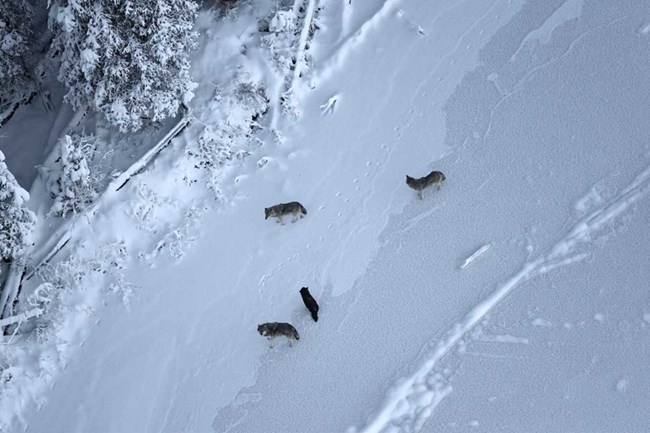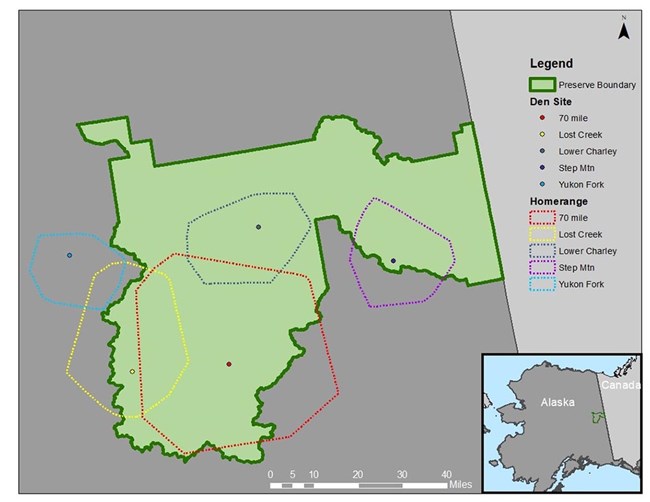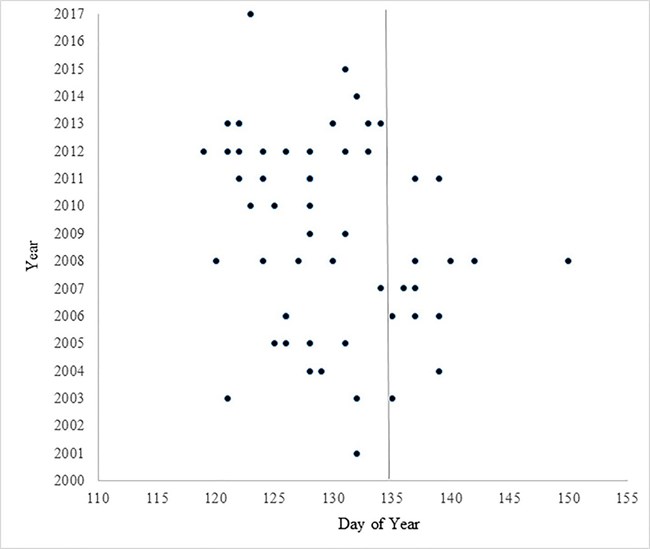Last updated: November 21, 2022
Article
Wolf Denning in Yukon-Charley Rivers National Preserve

At Yukon-Charley Rivers National Preserve, we tracked radio-collared wolves throughout the denning season from 1993-2017—one of the longest-running wolf monitoring programs in the world—in order to understand how to better manage them. During the course of this study, we learned that wolves denned at lower elevations on south-facing slopes, close to streams and rivers, in areas that hadn’t been recently burned by wildfire. Wolves prefer dry and shaded areas that are close to essential resources like prey and water.

We also learned that packs placed their dens toward the middle of their territory. This likely reduces competition, risk, and conflict with other packs and improves their access to prey. Fights between packs are a large source of mortality for wolves and centering their dens deep within their territory helps packs protect their young pups. We then created maps to predict the best denning habitat within the preserve so that park managers can improve the conservation of this keystone species.

We wanted to determine the timing of denning because pup rearing is a sensitive period for pack cohesion and survival. What we found through our study was that, on average, pregnant females entered their dens on May 10, emerged 8 days later, and then remained within a half mile of the den for another 6 days. While the breeding female was busy tending to the newborn pups, other pack members were responsible for bringing food to the den to help nourish the new mother. Because we looked at this pattern over 25 years, we also found some evidence that wolves may be denning earlier in the spring, perhaps responding to warmer spring temperatures within the region. Long-term data such as these, shed light into the inherently secretive denning ecology of wolves.
Contact: Mat Sorum, Mathew_Sorum@nps.gov
Denning Ecology of Wolves in East-Central Alaska, 1993–2017
Abstract
Dens are a focal point in the life history and ecology of gray wolves (Canis lupus), and their location can influence access to key resources, productivity, survivorship, and vulnerability to hunting, trapping, and control efforts. We analyzed the selection of den sites and the phenology of their use inside the Yukon-Charley River National Preserve from 1993 to 2017 to enhance our understanding of this resource. At the landscape scale, we found that wolves in east-central Alaska selected den sites that were lower in elevation, snow free earlier in the spring, exposed to greater solar radiation, and closer to water. Den sites were also associated with areas that had burned less recently and had lower terrain ruggedness at the 1 km scale. These results supported our hypothesis that wolves would den relatively close to essential resources (water and prey) and in areas that are drier (melt earlier) in the spring. At the home range scale, wolves also selected den sites at lower elevations and showed a strong selection for the center of their home range. Furthermore, the average distance between active den sites was 37.3 km, which is slightly greater than the average radius (32.5 km) of a home range of a pack. Our results support our hypothesis that dynamic social factors modulate the selection of environmental factors for den site location. Wolves den away from other packs to reduce competition and exposure to intraspecific conflict. High-quality denning habitat does not currently appear to be a limiting factor for this population. Females, on average, entered their dens on 10 May, stayed inside the den for eight days, and remained less than 1 km from the den for an additional six days after emerging. We found that wolves denning at higher elevations entered their dens later than those at lower elevations, which also supported one of our hypotheses. Lastly, we documented limited evidence of earlier denning over time. Long-term monitoring projects, such as ours, are critical in identifying these types of trends.
Joly, K., M. S. Sorum, and M. D. Cameron. 2018. Denning ecology of wolves in east-central Alaska, 1993-2017. Arctic Institute of North America 71(4).
